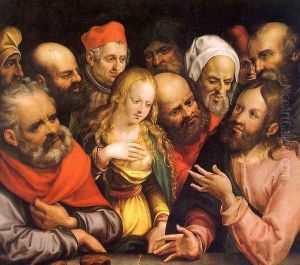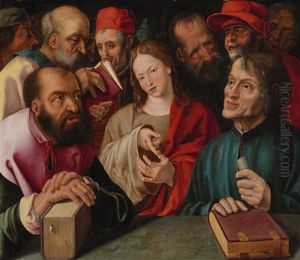Jobst Harrich Paintings
Jobst Harrich, also known as Jodocus Harich or Hiob Harrich, was a German painter and draughtsman from the late Renaissance period, with his life and career straddling the transition to the early Baroque. Harrich was born around 1580, though the exact date and place of his birth are not well-documented. Similarly, details about his early life and artistic training are scarce, leaving much of his formative years to speculation.
Harrich’s works suggest that he was influenced by the Mannerist style, which was characterized by artificiality, grace, and elegance rather than the more naturalistic approach of the High Renaissance. This style was prevalent in the late 16th and early 17th centuries and often included complex compositions, elongated figures, and a vivid use of color.
Despite the lack of extensive records, Harrich is known to have been active as a painter in the city of Nuremberg, which was a significant center for art and culture during the Renaissance. His surviving body of work includes religious themes, which were common for the period, as well as portraits. These works exhibit a keen attention to detail and a strong grasp of anatomical structure, indicating that Harrich was a skilled practitioner of his craft.
Jobst Harrich's death is recorded in 1617, but just like his life, details surrounding his passing are not well-documented. There is little information on the circumstances or the location of his death. His legacy is preserved through the artworks he left behind, which continue to be of interest to historians and collectors who study the transition from Renaissance to Baroque art in Germany. However, due to the limited number of surviving works and the general scarcity of historical records, Harrich remains a relatively obscure figure in the history of art, known mostly to specialists in the field.

